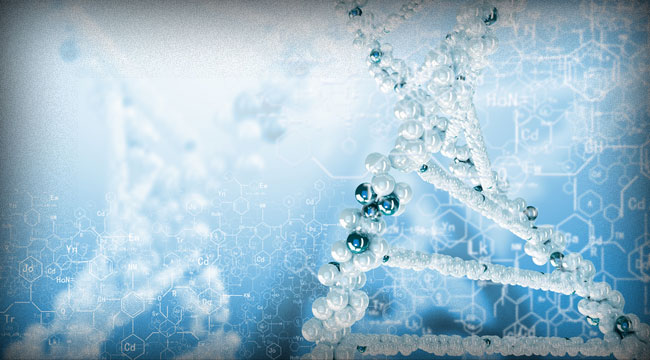In the ever-evolving landscape of biomedical engineering, bioprinting emerges as both a bastion of promise and a beacon shrouded in skepticism. This avant-garde technology seeks to unleash the potential of three-dimensional printing in the realm of cellular structures, offering the tantalizing prospect of creating viable tissues and, potentially, entire organs. As scientists pursue the path paved by this nascent discipline, it brings forth critical inquiries: Is bioprinting merely a mirage, an ephemeral illusion meant to captivate the imagination? Or is it the harbinger of a profound transformation in regenerative medicine?
The essence of bioprinting lies in its intricate ability to layer biomaterials alongside living cells to fabricate complex tissue-like structures. In its simplest form, bioprinting can be likened to constructing a three-dimensional jigsaw puzzle—each piece meticulously crafted to fit perfectly with others, ultimately forming a coherent entity. This intricate puzzle, however, challenges not only the technical proficiencies of researchers but also confronts profound ethical considerations surrounding its very implementation.
The genesis of bioprinting can be traced back to the confluence of biology and engineering disciplines. Building upon the foundational techniques of traditional 3D printing, scientists have began integrating live cells, hydrogels, and bioactive molecules into the ink used during the printing process. This combination aims to replicate the microenvironment found within natural tissues. The technology has burgeoned into a sophisticated array of methodologies—each bespoke to the specific requirements of the tissues under construction. From inkjet to laser-assisted bioprinting, the diversity of techniques underscores the inventive ingenuity driving the field forward.
Central to the allure of bioprinting is its potent application in regenerative medicine. Imagine a world where damaged tissues can be seamlessly replaced, a life where one does not need to await the vicissitude of donor organ shortages. During surgical procedures, bioprinting may provide surgeons with patient-specific grafts, meticulously crafted for optimal compatibility. For individuals suffering from diabetes, the creation of pancreatic islets through bioprinting could offer a reprieve from the relentless burden of insulin dependency. Such applications ignite a fervor for exploration within the scientific community.
However, the path toward these monumental achievements is fraught with technical hurdles and biological complexities. One of the primary challenges persists in achieving vascularization. A robust network of blood vessels is fundamental for sustaining complex tissues, and current methodologies often fall short in this aspect. Without an adequate supply of nutrients and oxygen, artificially printed tissues risk necrosis—a dire consequence for patient outcomes. Achieving harmony between printed structures and host vascular systems is a nuanced challenge that requires ongoing ingenuity.
Moreover, the sanctity of cellular behavior must be preserved during the printing process. The bioprinting technique cannot merely replicate the scaffolds of tissues but also needs to account for the intricate biochemical interactions that govern cellular function. Introducing cells into a synthetic matrix poses additional risks, particularly concerning cell viability and functionality post-printing. Scientists continually grapple with the delicate balance of providing the requisite physical and biochemical cues that nourish cellular growth while ensuring effective reproduction of tissue architecture.
The prospect of bioprinting is not only a medley of scientific advancements; it carries with it profound ethical implications. As we stand on the precipice of creating life-like tissues, questions arise regarding ownership, accessibility, and the intertwining of ethics with technological prowess. Who, for instance, has the right to patent a bioprinters’ output? Should a living tissue be regarded as an intellectual property, or does it belong exclusively to the individual from whom the cells were derived?
Furthermore, the potential misuse of bioprinting technologies haunts scholars and ethicists alike. The capability to print organs could, in some dystopian narratives, lead to commodification, exacerbating inequalities in healthcare access. As scientists endeavor to navigate this complex moral maze, it becomes imperative to foster frameworks that prioritize ethical guidelines, ensuring the responsible and equitable application of bioprinting technologies in clinical settings.
Envisioning the future of bioprinting unveils a panorama of possibilities. Researchers are not merely striving for a singular success; they are working toward a synergistic integration of various bioprinting modalities that could lead to the functionality of complex organs. The art of bioprinting may lend itself even further, into the realms of personalized medicine, where one could envision therapies tailored to the unique genetic makeup of an individual.
Nevertheless, the universe of bioprinting invites a spirit of relentless inquiry. As researchers probe deeper into the fabric of life, collaborations across disciplines—encompassing biology, engineering, ethics, and policy—become imperative. Through cross-pollination of ideas and shared advancements, scientific boundaries can be stretched, illuminating the shadows where skepticism resides.
In conclusion, while the realm of bioprinting may sway between hype and hope, it is undeniably anchored in ongoing scientific endeavor. As researchers peel back the layers of complexity inherent in cellular structures, they transcend the limitations of mere hype, paving a pathway toward a regenerative future. The spectacle of bioprinting ultimately serves as a testament to human ingenuity—a fluorescent beacon of possibility in the intricate tapestry of life sciences.










